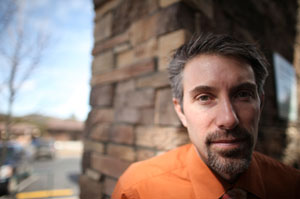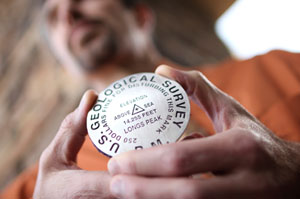ESTES PARK, COLO. — Dr. Frank Dumont knew one of his favorite patients was getting depressed. He was in his 70s when Dumont first started seeing him, and he remained active and fit and enjoyed hiking into his 80s. But then things started to change.
“He started complaining of his memory starting to slip,” the internist recalls. The patient would forget where he had put things, and struggle for simple words and phrases.
Dumont prescribed anti-depressants, and saw the man every eight weeks or so.
Like a lot of people in this small town 90 miles northwest of Denver, Dumont and his patient had been drawn there by the ruggedly beautiful mountains. They would often talk about one specific mountain called Longs Peak, which is a cherished part of Dumont’s life.
On their last visit, Dumont recalls he did ask his patient whether he was having any thoughts of hurting himself, and he got a convincing no.
“What in hindsight struck me about that visit is that he brought me a gift, which was a geological survey marker from the top of Longs Peak,” says Dumont. “The next that I had heard of him was from an emergency phone call from his wife about a month later. … She had to come in and talk to me [about] how to deal with the fact her husband had committed suicide.”
Dumont’s patient shot himself in the head with a rifle. Dumont was stunned, and guilt-ridden. He says he always asks his depressed patients about suicide, and whether they’ve thought about how they’d do it. But he regrets not asking this patient specifically whether he had any guns in the house.
Suicide prevention researcher Dr. Matthew Miller at the Harvard School of Public Health wants to make that question routine when doctors talk with patients.
Miller says that Dumont was doing everything he could to try to keep his patient from making a suicide attempt. “But what he didn’t do was the second step, which is to make it hard for him to die if he did make an attempt.”
That step is asking patients if they have access to guns, he says. If someone tries to commit suicide without using a gun, they probably won’t succeed.
“The likelihood of their dying is of an order of magnitude lower. Instead of there being a 90-plus percent chance of death, there’s a greater than 90 percent chance that they’ll live,” Miller says.
Miller cites one large study that found that nearly half of all suicide victims had seen a primary care doctor within a month of killing themselves. So it’s important for them to bring up suicide and possible means.
“We have to get people to stop thinking about these discussions as gun control in one way or another, but rather as a way of conveying useful information, so people make decisions that protect their family,” he says.
There are lots of reasons family doctors avoid bringing up guns with their patients — everything from not wanting to offend, to being too busy checking off all the screenings and questions about smoking, diet and exercise.
Not everybody wants gun advice from a medical professional. Edgar Antillon organized a pro-gun rally at the Colorado state capitol earlier this year. He says he would resent a doctor bringing it up.
“Tell me to stay healthy, tell me my baby has colic, but I don’t think it’s their job to tell me about gun safety.”
But Dumont has spent a lot of time second-guessing himself, and he hopes small efforts on his part might reduce the odds that another patient would take his own life.
“I have a lower threshold for asking follow-up questions, asking the same thing a different way,” he says. “Or if I have any inkling, starting to push a little bit further, and say, ‘Well, so you’re not really thinking about it, but have you ever thought about how you would go about it if you were going to?’ And I have a lower threshold for asking about a weapon in the home as well.”
Dumont says he thinks more physicians would talk with their patients about guns if they got information about the health risks associated with them. Medical journals and a federal board of experts regularly issue advice on preventing everything from obesity to car accidents to workplace injuries. But there’s been a ban on federally-funded gun safety research until President Barack Obama restored it with an executive action.
This story is part of a collaboration that includes Colorado Public Radio, NPR and Kaiser Health News.








